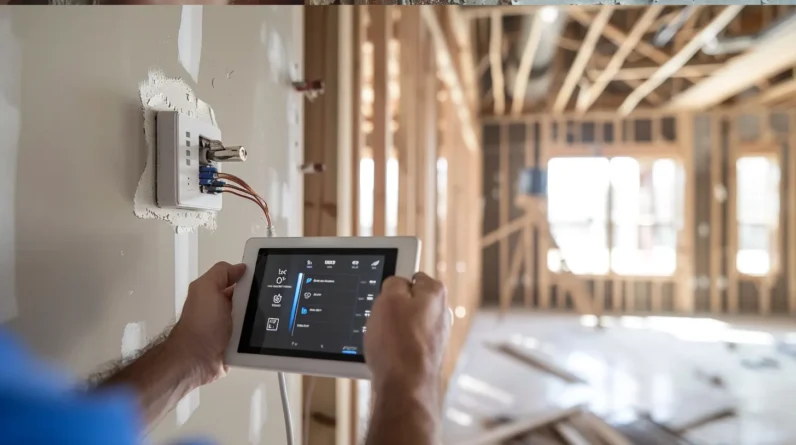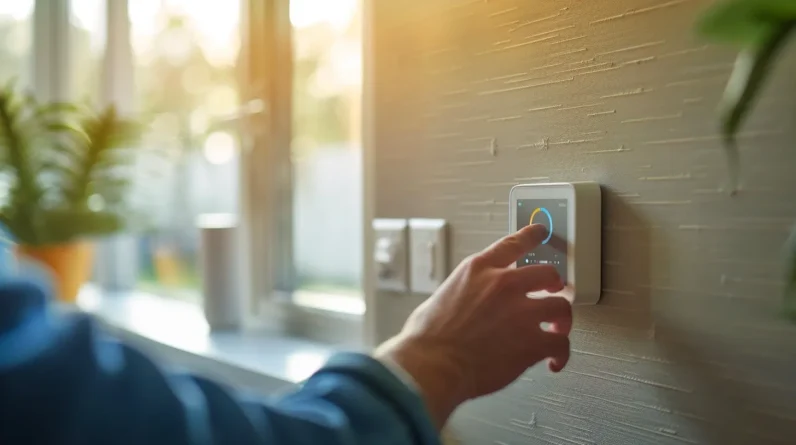
In the ever-evolving world of smart gadgets, artificial intelligence (AI) emerges as the catalyst for enhanced efficiency. Like a conductor leading a symphony, AI orchestrates a harmonious blend of improved voice recognition, personalized recommendations, energy management, task automation, and security features. This article delves into the ways in which AI empowers smart gadgets to perform with unparalleled precision, offering a glimpse into the future of technology mastery. Prepare to witness the transformative impact of AI on the efficiency of our digital companions.
Key Takeaways
– Improved voice recognition and control capabilities in smart gadgets through AI technology.
– Enhanced personalized recommendations based on user data analysis.
– Smarter energy management and optimization in smart gadgets using AI integration.
– Streamlined task automation and efficiency through AI-powered automation.
Improved Voice Recognition and Control
One significant way AI enhances smart gadgets efficiency is through the implementation of improved voice recognition and control capabilities. Natural language processing (NLP) and machine learning techniques are the driving forces behind these advancements. NLP allows smart gadgets to understand and interpret human language, enabling more intuitive and seamless user interactions.
Through machine learning algorithms, smart gadgets can continuously learn and improve their voice recognition capabilities. They can adapt to individual users’ accents, speech patterns, and vocabulary, leading to greater accuracy and understanding. This allows users to interact with their devices using natural, conversational language, without the need for rigid commands or specific phrases.
Improved voice recognition and control also lead to enhanced hands-free operation of smart gadgets. Users can perform various tasks, such as making phone calls, sending messages, playing music, or controlling smart home devices, simply by speaking commands. This not only adds convenience but also increases accessibility for individuals with mobility impairments.
The integration of AI-powered voice assistants, such as Siri, Alexa, or Google Assistant, with smart gadgets allows for seamless control and coordination across multiple devices. Users can control their smart TVs, thermostats, or security systems using voice commands, creating a cohesive and interconnected smart home ecosystem.
Enhanced Personalized Recommendations
With the advancements in AI technology, smart gadgets now have the capability to provide enhanced personalized recommendations based on user preferences and behaviors. This feature has revolutionized the way we shop and consume entertainment. Automated shopping has become more efficient and convenient, as smart gadgets can analyze user behavior and preferences to suggest relevant products and services.
AI algorithms can analyze vast amounts of data, such as purchase history, browsing patterns, and even social media activity, to understand individual preferences and make accurate recommendations. This not only saves time for users but also helps businesses increase sales by offering personalized suggestions that align with users’ interests.
Personalized entertainment has become more immersive and enjoyable. Smart gadgets can analyze users’ viewing habits, favorite genres, and even emotional responses to recommend movies, TV shows, music, and books that are tailored to their individual tastes. This creates a more engaging and satisfying entertainment experience.
Smarter Energy Management
The integration of AI technology enables smart gadgets to optimize energy consumption through smarter energy management techniques. By leveraging machine learning algorithms and real-time data analysis, AI-powered devices can intelligently monitor and control energy usage, leading to energy optimization and consumption reduction.
One way AI enhances smarter energy management is through the use of predictive analytics. By analyzing historical energy usage patterns, weather data, and user behavior, AI algorithms can accurately predict future energy needs and adjust settings accordingly. For example, an AI-enabled thermostat can learn the occupants’ preferences and automatically adjust the temperature to minimize energy waste.
AI can optimize energy consumption by identifying and eliminating energy inefficiencies. Smart devices equipped with AI algorithms can continuously monitor energy usage and detect anomalies or excessive consumption. This information can then be used to identify energy-consuming devices that are not operating efficiently or are left on unnecessarily. By notifying users or automatically adjusting settings, AI can help reduce energy wastage.
AI can enable smart gadgets to integrate with the energy grid and participate in demand response programs. By analyzing energy demand patterns and grid conditions, AI algorithms can optimize the timing of energy-intensive tasks to avoid peak demand periods. This not only helps reduce energy consumption but also contributes to the stability and reliability of the overall energy grid.
Streamlined Task Automation
Streamlined task automation is a key feature of AI-powered smart gadgets, enabling efficient and seamless execution of various tasks. By automating repetitive and time-consuming tasks, AI enhances the overall efficiency and productivity of smart gadgets. Here are four ways in which streamlined task automation is transforming the capabilities of these devices:
1. Automated scheduling: AI-powered smart gadgets can analyze patterns and user preferences to autonomously schedule tasks and activities. Whether it’s setting reminders, managing appointments, or organizing daily routines, these devices can take care of the scheduling process, saving users valuable time and effort.
2. Efficient data analysis: Smart gadgets equipped with AI algorithms can collect and analyze vast amounts of data in real-time. This enables them to provide valuable insights and recommendations based on user behavior and preferences. From suggesting personalized content to optimizing energy usage patterns, AI-powered smart gadgets can make data-driven decisions to enhance user experiences.
3. Seamless integration with other devices: Through AI, smart gadgets can communicate and collaborate with other devices in a connected ecosystem. This allows for streamlined task automation across multiple devices, making the overall user experience more convenient and efficient.
4. Context-aware automation: AI-powered smart gadgets can adapt their behavior based on contextual cues. By understanding the user’s environment and preferences, these devices can automate tasks accordingly. For example, adjusting lighting and temperature based on occupancy, or playing music based on the user’s mood or activity.
Advanced Security and Privacy Features
AI-powered smart gadgets also offer advanced security and privacy features, ensuring the protection of user data and maintaining a secure environment for users. One of the key features that enhance security is biometric authentication. With AI, smart gadgets can now recognize and verify users based on their unique biological traits such as fingerprints, facial features, or voice patterns. This advanced authentication method adds an extra layer of security, making it difficult for unauthorized individuals to access the device or its data.
Another important aspect of security in AI-powered smart gadgets is data encryption. AI algorithms can encrypt sensitive user data, making it unreadable to anyone without the proper decryption key. This ensures that even if the data is intercepted or stolen, it remains protected and inaccessible to unauthorized parties. Additionally, AI can also monitor and detect any suspicious activities or potential security breaches, alerting the user or taking necessary actions to mitigate the risks.
Privacy is also a significant concern when it comes to smart gadgets. AI can help address these concerns by enabling features such as personalized privacy settings and data anonymization. Users can have more control over their data and choose what information they want to share with the device or other connected services. AI algorithms can also anonymize data, removing personally identifiable information, while still allowing for useful insights and analysis.
Conclusion
The integration of artificial intelligence (AI) in smart gadgets has significantly improved efficiency. AI enables improved voice recognition and control, allowing for seamless interaction with these devices. Personalized recommendations based on user preferences enhance the overall user experience. Moreover, AI-driven energy management systems optimize power consumption, leading to smarter and more sustainable usage. Task automation is streamlined, reducing manual effort and increasing productivity. Lastly, advanced security and privacy features ensure the protection of user data. AI truly revolutionizes the capabilities of smart gadgets, making them more efficient and user-friendly.







